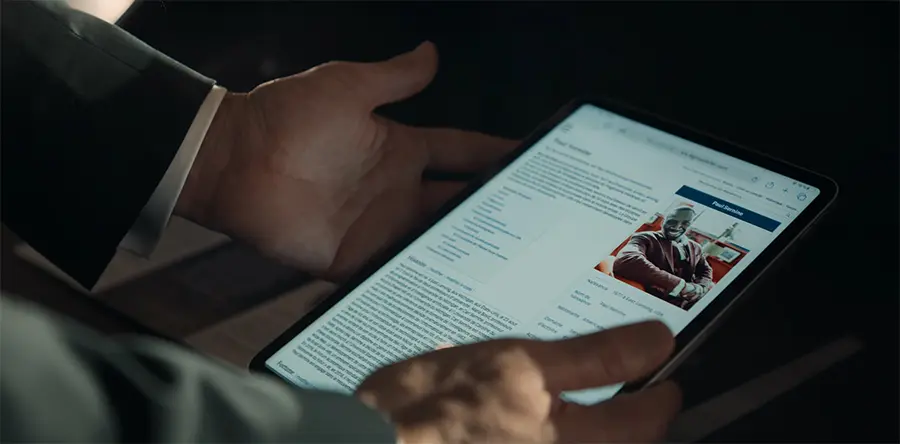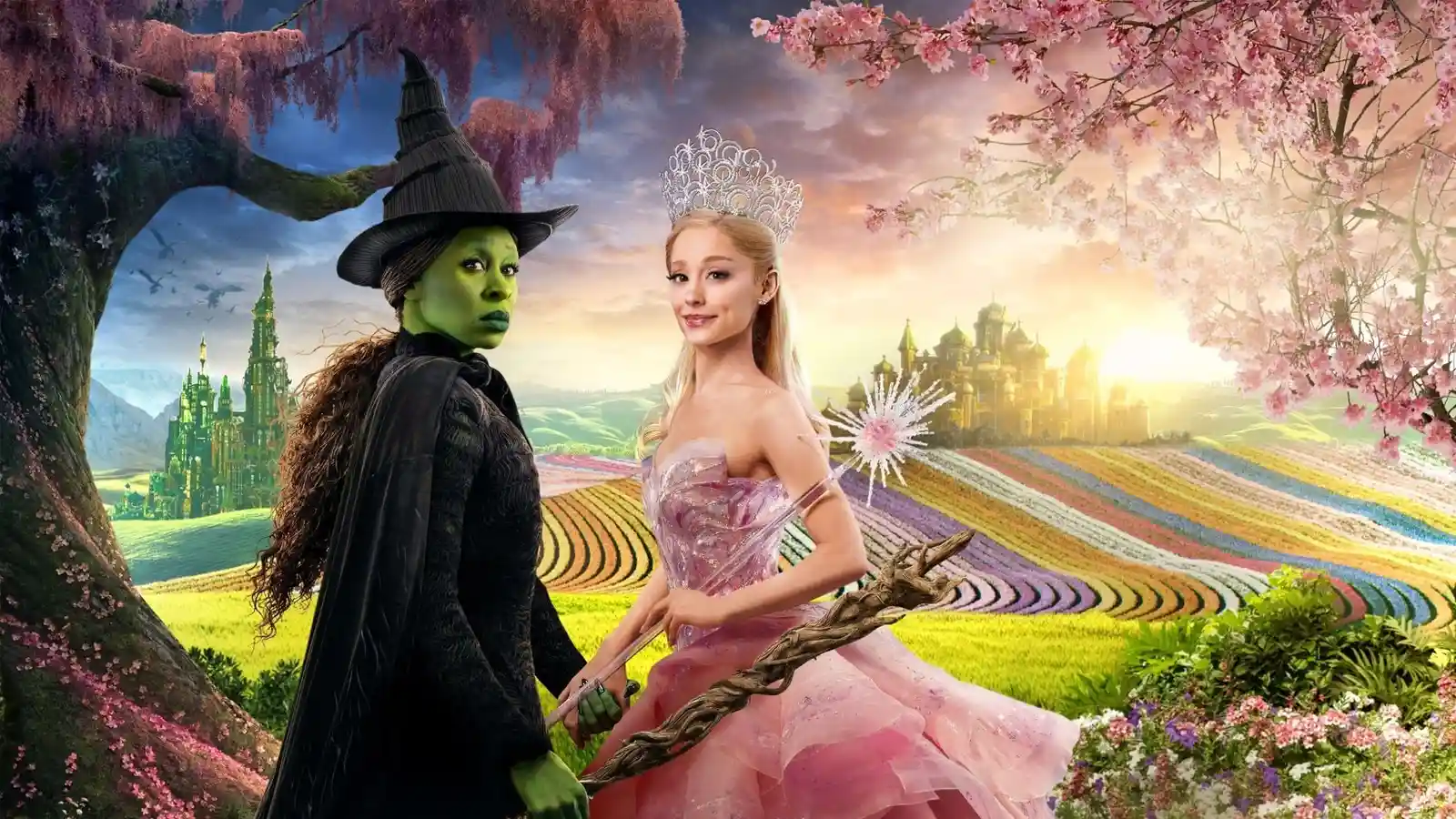Lupin
Develop your knowledge and understanding of the close study product.
Introduction
Lupin is a French thriller which achieved immediate critical success, winning the Best Drama Series at the International Emmy Awards and the Golden Globes. The programme also secured top ten positions on Netflix’s international lists, making it one of the most watched series in a language other than English on the streaming service.
The binge-worthy story focuses on Assane Diop, a professional thief who sets out to avenge his father’s death. The casting of Omar Sy in the lead role emphasises issues of race, immigration and social inequality in contemporary France, so we are going to begin our analysis with a firm focus on media representations before exploring genre and narrative.
Contents
Race and Representation
The gentleman thief is traditionally imagined as a white, upper-class European, such as the portrait on the cover of young Assane’s birthday present. Top hats are a symbol of formality, respectability and wealth. The monocle is another signifier of affluence but also keen intellect. The sketch is the stereotype of a gentleman.

By embodying Lupin, Assane Diop subverts expectations and constructs a new vision of the anti-hero.
The Invisible Hyper-visible
Marginalised groups are often rendered invisible in society, so the protagonist moves unnoticed through spaces of privilege when he plays the janitor. He tells the loan sharks, “Those at the top don’t look at the bottom”. Assane uses this invisibility to his advantage: Kevin manages to sneak into the Louvre using a Black woman’s identification badge and nobody realises our hero is wearing a very fancy pair of shoes after the heist.
Frantz Fanon (1952) described feeling like a racial signifier every time he was racially objectified in white society. In the swimming pool, Juliette asks Assane “is what I hear about Black people true”, reducing him to a racial signifier to be taunted instead of seeing him as an individual.
Similarly, Assane’s father reassures Mrs Pelligrini he is not a threat when he offers to fix her car – after she locked the door. Despite having no evidence, the police immediately arrest him for stealing the necklace. The word of the wealthy, white businessman was enough to condemn “this” poor, Black immigrant.

During the auction, Assane is the only Black presence in the room. One of the ringmen searches the internet to find proof of the protagonist’s wealth and, later, the auctioneer comments “I wasn’t expecting a buyer like you” before being forced to add because Assane is “so young”.
Like Fanon’s experiences, Assane and his father are fixed and hyper-visible in the white gaze.
Racism and Racial Identities
These moments from the first episode also draw attention to the internal conflict between national and racial identities. Assane and his father are French citizens, but the colour of their skin position them as outsiders. Think about how Assane says he is at “the captain’s disposal” and agrees to be searched by the policeman to prove his innocence. Why not search the auctioneer?
Paul Gilroy (1993) argued race is a product of racism. In Lupin, the ignorance and fear of the white gaze constructs Assane and his father’s racial identity.
The concept of the double consciousness was first introduced by W.E.B. Du Bois (1903) and refers to “sense of always looking at one’s self through the eyes of others”. In an interview with Rolling Stone, Omar Sy commented on his need to “charm” and “sell” growing up because “to be accepted, sometimes you have to pretend”.
Assane learns he does not have to swim to justify his presence in spaces defined by the white gaze. He develops the confidence and agency to determine his own future. He is Lupin.
Gender and Representation
Stuart Hall (1981) criticised how representations of race were constructed through the biased lens of the “white eye” to reinforce the dominant ideology. Similarly, in her analysis of classic Hollywood cinema, Laura Mulvey (1975) concluded films objectified women to satisfy the male gaze.
There are three significant female characters in the opening episode: Juliette Pelligrini, Mrs Pelligrini and Claire Laurent. Each character is defined by their relationship to the male protagonist and not their own narrative arc. The first 48 minutes of Lupin does not pass the Bechdel test.
Juliette is the dark-haired and irresistible femme fatale who dares the young Assane to swim in the pool for “a real kiss”. Liesbet van Zoonen (1996) condemned the use of this stereotype in media texts because it reinforces the sexualisation of women in society and suggests they are dangerous threats that need to be controlled.

Juliette may seem to be in a position of power, but her seduction of Assane is self-destructive. Van Zoonen emphasised how women are more likely to be constructed as spectacles. There is no doubt Juliette’s body is foregrounded in the shots of her toying with Assane.
Mrs Pelligrini is a passive figure. She relies on Assane’s father to fix the car and remains silent when he is accused of stealing the necklace. Assane rejects her efforts when she offers her condolences at the graveyard.
Claire is the estranged wife. She is portrayed as independent and assertive, but her function is to position the audience to like Assane because her continued friendship with her ex-husband suggests he is good person.
Although the representation of women is narrow, it is worth noting women were disposable objects in the original novels and character development is always going to be limited by the short length of the first episode.
The representation of Assane challenges concepts of race, immigration and social inequality in contemporary France, but he reinforces many traits associated with masculinity.
The protagonist describes himself as a “lone wolf”. He is independent and ambitious. Fiercely Intelligent and rational. His physical toughness is obvious when he overpowers the “strong man” with ease.
In the binary system, masculinity is often defined by the absence of emotion. Although his marriage is broken, Assane is nurturing and vulnerable, particularly in his relationship with his son. He is “not the perfect dad” but the first episode ends with the two together on a bridge over the River Seine to connote the protagonist’s movement from one phase of his life to another.

Assane adopts different roles which require different performances. The disguises reinforce the argument that identities are socially constructed. Masculinity and femininity are not fixed or stable. They are performative so it is important for the mainstream media to deliver broader representations of gender and family dynamics.
The Importance of Setting
Lupin opens with an aerial shot of the Louvre’s visitor entrance and cuts to the workers making their way through the “separate” underground access. The stark contrast in this collision of shots is deliberate. The opulent palace with its ornate columns and decorative stonework looks divine in the golden lights. The weight of that power and culture presses down on the workers who are framed by brutal slabs of lifeless concrete.
The Louvre was built as fortress for the French king in the late 12th century. It was transformed into a museum in 1793, during the French Revolution, and has become a symbol of heritage and elitism. Lupin uses the setting for another fight against social injustice.
Paris is romanticised in global media as a city of love and beauty. Lupin takes the audience beyond the glamour and into the less visible parts of the city to highlight the huge inequalities in French society. For example, prisons are supposed to be spaces of justice, punishment and rehabilitation, but Assane’s wrongful incarceration demonstrates how institutions can perpetuate racial and class-based discrimination.
Audience Reception
Media texts are open to interpretation. The viewer’s cultural background, experiences and beliefs will shape their appreciation of Lupin. Some will accept the programme’s criticism of systemic injustice in France and celebrate Assane as the anti-hero. Other viewers might take a negotiated reading and enjoy the protagonist’s masterplan while questioning the lack of female character development. A more conservative audience might reject the progressive stance on racial identities and consider Assane’s actions to be morally ambiguous.
Lupin satisfies a range of audience needs. Some will be motivated by diversion because the series offers the thrill of a heist narrative, drawing the audience into the suspense, action and clever twists.
Assane Diop will resonate with viewers who see aspects of themselves in his struggles and triumphs. His story of overcoming injustice offers a sense of empowerment, particularly for marginalised audiences who are often ignored by mainstream media.
The story certainly opens the debate around the intersection of race and class in French society.
Genre
In his analysis of cinema, Steve Neale (1980) defined genres as “specific variations of the interplay of codes”. We can also classify television programmes according to the combination of characters, narrative, setting, costumes, technical aspects, and everything else involved in the production of meaning.
Lupin features a clever and morally complex mastermind, a crew of specialists who implement his high-stakes plan, and a corrupt businessman who deserves to be robbed. The narrative includes moments of deception, misdirection, betrayal and the inevitable twist to the tale that reframes our understanding of events. Various aspects of the plan are outlined in a voice over and flashforwards. The crew have seven minutes from the moment the security cameras are disabled to when the police arrive and the spectacular car chase ending with the Ferrari crashing into the Louvre. Of course, there are always unforeseen obstacles that test the characters’ resolve. At the end of heist, our anti-hero escapes with the necklace.
The music is a deliberate hybrid of classical heritage and slick hip hop beats to reinforce the protagonist’s sophistication and swagger. It sounds cool.
The first episode features plenty of low-key lighting to create a sense of secrecy and danger, the green-tinged surveillance footage emphasises the urgency of the action, and tracking shots locate the characters in the scene. There is the obligatory spotlight focusing our attention on the necklace in the dark museum.
The interplay of these codes is typical of the heist genre, a subgenre of crime drama.
Neale also argued genres were maintained through “repetition and difference”. If audiences enjoyed a heist story, they would want to repeat that experience by watching another one. However, each story needs to add something different and unique to the formula.
For example, the use of chloroform to incapacitate characters is a common trope in crime narratives, such as the kidnapper who knocks out the victim with a cloth doused in the drug. However, Lupin subverts our expectations when Rudy sprays “instantaneous” chloroform on the security guards but fails to render them unconscious and they fight instead.
Another good example is when the policeman approaches the “discrete” getaway car and asks Rudy to turn off the engine. The audience expects to see a violent conflict. Instead, we get a moment of comedy because the policeman wants us to “think about the planet” by reducing exhaust fumes.
The most obvious difference is the representation of the gentleman thief. Assane is the archetypical suave and confident trickster who uses his intelligence rather than brute force execute the robbery. The way he slips the roll of cash into his ex-wife’s pocket demonstrates his skills. He is a master of disguise, swiftly changing costumes from the cleaner to the wealthy entrepreneur. Notice how Assane hunches his shoulders to appear smaller and insignificant when he plays the role of janitor and his back-straight strides as a businessman. Importantly, the audience are positioned to root for the anti-hero because he is motivated by justice and not greed.
In contrast to the traditional representation, Assane is a Black Frenchman of Senegalese descent. His story offers the audience something different to enjoy.
The global popularity of the programme demonstrates the genre’s appeal. Although the story is rooted in French culture and history, its themes of injustice and resilience appeal to an international audience.
Narrative
Roland Barthes argued the chronology of narratives were driven by action and enigma codes. The heist provides a clear sequence of actions with one beat of the story leading logically to the next.
The first episode seems to establish the protagonist’s equilibrium. He works as a cleaner at the museum, he is estranged from his wife and son, and he owes money to dangerous loan sharks.
His routine is disrupted by auction of Marie-Antoinette’s necklace. The audience assumes Assane is motivated by money to steal it. His cunning plan is the disequilibrium.
The narrative arc comes to satisfying conclusion typical of serialised storytelling. However, the new equilibrium is unstable because a detective has made a connection between the protagonist and the gentleman thief from the novel, so the audience are left wondering what will happen next.
The episode also raises questions about aspects of Assane’s identity, especially when he adopts the alias Paul Sernine for the auction. A good example of another enigma code is the shot of his face on Wikipedia claiming he was worth $574m. There is a dramatic revelation of truth towards when we realise the protagonist is a master thief who was posing as a cleaner to familiarise himself with the museum’s layout and security measures.
Assane stole the necklace to avenge (or repair) the injustice done to his father and not to satisfy his greed. This revelation positions the audience to appreciate his crime. It also sets up another enigma code – what actually happened to the necklace?
Barthes outlined three other narrative codes. The use of semantic codes is incredibly important in establishing the Assane’s character, such as the way he folds the origami lollipop connotes his dexterity and patience. He overpowers the muscular henchman which demonstrates his strength. His ability to spell “presumptuous” in the first flashback suggests he is intelligent. The word is also a warning to the audience not to make assumptions about anything in this story.
The episode focuses on the binary opposition between the wealthy elite and the working class living in the cité, so there are plenty of symbolic codes to analyse. For instance, the blue overalls he wears to work in the Louvre denote his role as cleaner and his suit at the auction is an obvious signifier of wealth. Both are semantic codes, but the contrast between the two representations forms a symbolic code which draws attention to the ways we construct class in society. It is also worth comparing the opulent mansion owned by the Pellegrinis to the high-rise towers and urban decay of the working-class areas.
The necklace is a cultural code because it is given further importance through its links to Marie-Antoinette, a very famous figure in French history who is misquoted as saying “let them eat cake” when the poor and desperate were starving in Paris. By depicting Assane as the anti-hero who steals the necklace, the narrative delivers a smart criticism of class and racial structures in French society.
The most obvious cultural codes are the many references to novel. Lupin can be considered a postmodern text because it reworks the original series of novels, including the story of a jewellery heist. The intertextual reference is another challenge to the binary opposition between a cultural elite and the working class because the son of poor immigrant is taking on a role often encoded as white.
Netflix and the Global Audience
Netflix is a global streaming service that distributes content over the internet to its 200 million subscribers. The ability to watch films and television programmes on-demand is very appealing, but the company needs to invest in a repertoire of content that will keep people paying the monthly fee.
Mareike Jenner (2018) identified two strategies Netflix followed to ensure its output appealed to a global audience. The company focused on high-concept series with genres attractive to subscribers around the world. They also constructed “a transnational value system” that celebrated diversity, global citizenship, and a progressive “global culture”.
Lupin is a great example of national content with progressive international values.
Formatting Risk
David Hesmondhalgh (2013) identified three formatting strategies production companies used to reduce risk: genre, star power and serialisation. We have already discussed the global appeal of the heist genre. There is no doubt Netflix’s own viewing data supported their investment in crime dramas.
Omar Sy had already worked with Gaumont Film Company on the internationally acclaimed The Intouchables (2012), so the actor was bringing his star power to Lupin. It is also worth noting the rise of the showrunner auteur with George Kay helping to create the series.
Arsène Lupin is an iconic character in France culture. By adapting the popular novels into the contemporary setting, the producers were able to take advantage of the well-known intellectual property.
Constructing an Audience
It is no surprise Lupin was an immediate success reaching over 70 million subscribers.
Netflix actively constructs audiences by using data to recommend shows like Lupin to people who have already expressed an interest in crime drama, such as Money Heist (2017). The platform makes it easy for audiences to find what they are looking for through genre categorisation and personalised thumbnails. They also send emails to account holders about future releases to drive engagement and viewing figures.
Lupin is part of Netflix’s broader strategy to invest in non-English language originals that have the potential to travel globally. By promoting high production values and cinematic quality, the company makes sure these shows don’t feel “regional” in quality.
They also invest in strong localisation efforts to make their shows more accessible. Skip to the moment young Assane dismisses Mrs Pelligrini in the graveyard – the English subtitles are quite different to the dubbed version! Some viewers like to hear the real voices of the actors and watch Lupin in its original French dialogue with subtitles. Other viewers can enjoy dubbed versions in their own language. Audio captioning is also available.
Netflix is an increasingly dominant force in the contemporary media landscape because they have developed content that appeals to a global audience. Lupin is part of that success.
Bibliography
Barthes, Roland (1970) S/Z.
Du Bois, W.E.B. (1903) The Souls of Black Folk.
Fanon, Frantz (1952) Black Skin, White Masks.
Gilroy, Paul (1993) The Black Atlantic: Modernity and Double Consciousness. Verso Books.
Hall, Stuart (1981) Whites of their Eyes: Racist Ideologies and the Media. In G. Bridges & R. Brunt Silver linings: Some strategies for the eighties. Lawrence & Wishart.
Hesmondhalgh, David (2013) Cultural Industries. Sage Publications.
Jenner, Mareike (2018) Netflix and the re-invention of television. Springer International Publishing.
Mulvey, Laura (1975) Visual pleasure and narrative cinema.
Neale, Steve (1980) Genre.
Todorov, Tzvetan (1971) The 2 Principles of Narrative.
van Zoonen, Liesbet (1996) Feminist Perspectives on the Media.
Keep Revising
Get exam-ready with resources and guides designed specifically for the AQA A Level Media Studies specification.







